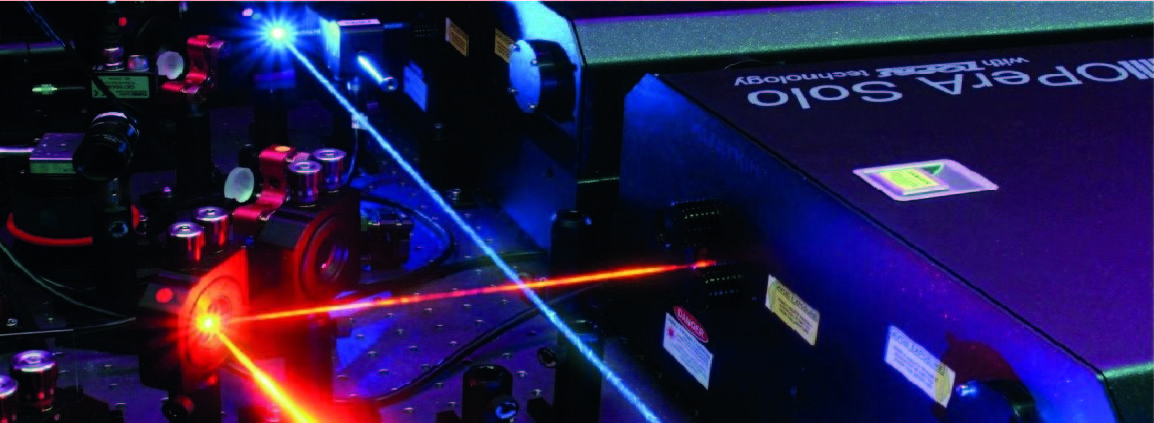Main content
Top content

MIR-fs-Spectroscopy
Time-resolved mid- infrared pump-probe-spectroscopy allows taking a closer look at subpicosecond lattice dynamics and granting insight into the atomic characteristics of small, strong coupling, polarons. Even though, a multitude of knowledge has been gathered and a variety of experimental techniques like EPR/NMR measurements were applied, there is still no possibility for direct experimental access to the atomic displacements induced by small polarons within a continuum and at elevated temperatures.
We use ultrafast mid-infrared pump-probe spectroscopy (τPump ≈ 100 fs, τProbe ≈ 230 fs) combined with potential landscape modelling to experimentally achieve atomic insight about the lattice distortion caused by small hole polarons at room temperature in near stoichiometric lithium niobate. The dynamic absorption change of the OH− stretching vibration is applied as a local probe for optically excited small, strong-coupling polarons. We experimentally determine a blue shift that is explained straightforwardly by a local change of the lattice environment induced by small polaron formation. This explanation is supported by the relaxation dynamic of the shift that corresponds with the decay time-constants (τ ≈ 1 ms) of small hole O- and small bound NbLi4+ polarons measured by pump-probe spectroscopy in the visible and near infrared spectral range. Based on our experimental findings, we are able to determine the lattice distortion induced by small hole polarons by means of modelling the vibrational potential landscape in direction of the O-H− bond. For this purpose, a combination of a static Morse potential and a Coulomb potential, given by the atom sites in the lattice, is used. We further take into account the state-of-the-art knowledge of the position of hydrogen and the structural data of the crystals lattice. Local changes of the oxygen atoms in the first coordination sphere lead to a different vibrational frequency of the OH− stretching bond. Hereby we are able to finally determine the polaron induced lattice distortion to ≈ 3% in full accordance with the results of previously reported ab-initio calculations.

